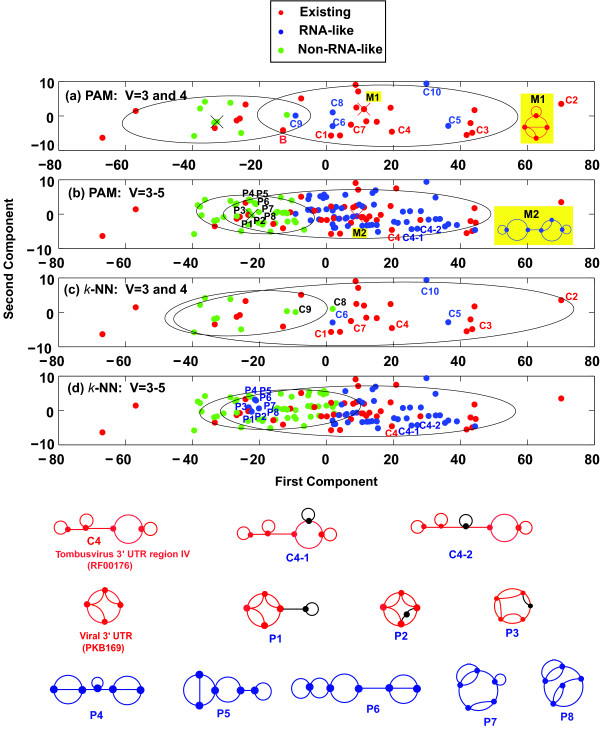Figure 6.
Clustering plots of PAM and k-NN clustering for 38 RNA dual graphs with 3 and 4 vertices (a versus c) and for 146 RNA dual graphs with 3 to 5 vertices (b versus d). Existing, RNA-like, and non-RNA-like topologies are represented as red, blue, and green, respectively. Each ellipse encloses at least 85% of the RNA-like or non-RNA-like group members. In (a) and (b), the centers of two groups (M1 and M2) are marked with an X and the topologies of RNA-like groups' centers are shown. M1 and M2 emerge as pseudoknot RNAs with universal features, corresponding to structures of tmRNA (PKB234) and a candidate topology similar to the Box H/ACA snoRNA (RF00233). In (a), C1, C2, C3, C4, and C7 are existing topologies which were classified as RNA-like topologies in 2004 using PAM [32] (see Figure 5) and B is a confirmed bridge structure corresponding to U5 spliceosomal RNA (RF00020, see the second row in Figure 2). In (b) and (d), two candidate topologies (C4-1 and C4-2) are shown which are similar to the newly-confirmed existing topology C4 (Tombusvirus 3' UTR region IV). In (c), C5, C6 and C10 remain as RNA-like while C8 and C9 have been changed into non-RNA-like topologies. See Figures 5 and 9 for C1-C10. In (d), eight reclassified candidate pseudoknot topologies (P1-P8, currently RNA-like topologies which were classified non-RNA-like in 2004) are shown; P1, P2 and P3 are similar to the newly-confirmed existing topology Viral 3' UTR (Pseudobase++: PKB169).

